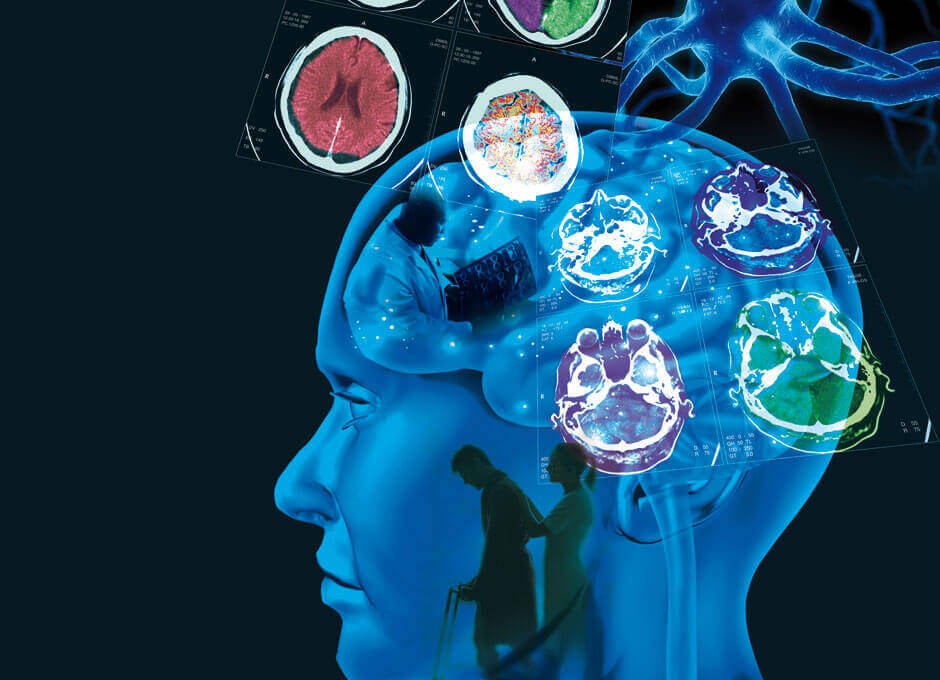Multiple sclerosis is a chronic disease of the central nervous system, is present worldwide and is the most common cause of neurological disorders in young and middle-aged adults, especially in women.
Surrounding and protecting the nerve fibers of the central nervous system is a material composed of proteins and fats called myelin, which facilitates the conduction of electrical impulses between these fibers. In multiple sclerosis, myelin is lost in several areas, sometimes leaving scars (sclerosis) These injured areas are also called demyelination plaques.
- Myelin not only protects nerve fibers.
- But also facilitates their functioning.
- If myelin is destroyed or damaged.
- The nerves’ ability to conduct pulses is greatly reduced.
- Fortunately.
- The damage caused by myelin is reversible in many cases.
Multiple sclerosis is defined as an inflammatory disorder of the white substance of the central nervous system and is characterized by multifocal areas of demyelination, loss of oligodendrocytes, astrophysis and relative axon immunity.
Multiple sclerosis is of unknown etiology. Its cause is unclear and several mechanisms have been reported, including immune, hereditary and infectious factors.
The exact role of viral infection in triggering and maintaining multiple sclerosis is unknown. Despite this, several viruses have been studied in relation to this disease. Epstein-Barr virus has been linked to demyelination (loss of myelin pods). is evidence of vulnerability to exposure to this virus.
Among environmental factors, viruses are the agents most studied as triggers or determinants of the disease; Viruses are suspected of acting on oligodendrocytes, modifying them in childhood and subsequently conditioning an abnormal immune response (altering correct myelination).
As for genetic predisposition, the relationship seems clearer: in studies of univithelial twins the risk of multiple sclerosis is 31%, while in bivitelials it is around 5%.
In families with multiple sclerosis cases, the risk of contracting the disease is 2 to 5%, while in the general population it is 0. 1%.
The onset of the disease can be so benign that the person does not feel the need to see the doctor. The most common initial symptoms are weakness of one or more limbs, blurred vision, impaired sensitivity, double vision (diplopia) and difficulty coordinating movement. (ataxia).
It is also common to weakness the limbs, fatigue after exercise, difficulty climbing stairs, loss of dexterity and increased muscle tone, symptoms that usually appear gradually.
Fatigue is the most common symptom of multiple sclerosis, affecting 2/3 of patients; half of these patients describe this symptom as the most unpleasant feeling, visibly affecting quality of life.
This disability is often associated with depression and other factors that contribute to fatigue, including motor dysfunction, limbic, central gray nuclei, or areas of the hypothalamus.
Fatigue significantly and significantly reduces the quality of life of people with multiple sclerosis, so it is a factor to consider, but at the same time difficult to manipulate and interpret, by the subjectivity of perception.
Energy loss affects both motor and cognitive abilities and should be distinguished from weakness, energy loss and difficulty concentrating, so a different diagnosis of fatigue in multiple sclerosis is necessary compared to clinical conditions such as depression, motor disorders, thyroid. pathology, side effects of medications such as antispasmodics and immunosuppressants.
Outbreaks (relapses, relapses, worsening) are very typical of multiple sclerosis and are characterized by symptoms of neurological dysfunction for more than 24 hours.
To recognize epidemics should affect different parts of the central nervous system and be separated for a period of at least one month, this disappearance of symptoms is defined as remission, with an improvement or disappearance of symptoms and signs for at least 24 hours.
There is a group of auxiliary symptoms that, when clinically expressed, support the diagnosis of multiple sclerosis and are:
The evolution of multiple sclerosis is uncertain, but the tendency is to aggravate with great physical difficulties, psychological and cognitive disorders.
Unfortunately, there is currently no treatment that can cure the disease or positively alter its natural clinical evolution; in the long term, the goal is to try to reduce the number of epidemics, aftermath and progression of physical disability. Immunosuppressants (azathioprine, cyclophosphamide, metrotrexate) and interferons (alpha) are used.
In contrast, corticosteroids are used in high doses for short periods (3 to 5 days) to treat the epidemic, and it is essential to correctly identify the epidemic to establish the diagnosis and formulate a correct therapeutic approach.
Symptoms of the epidemic are the expression of one or more lesions resulting from an inflammatory process located in the central nervous system and, therefore, its treatment aims to control the inflammatory process, especially with corticosteroids.
Symptomatic treatment can be summarized as follows
Rehabilitation treatment is of paramount importance with the fundamental objective of preventing the patient’s disability and disability or at least reducing them to the maximum.
The patient needs to acquire new skills, strengthening healthy systems, in this way the person can maintain a certain independence, for this it is essential to adapt or modify the social and professional environment of the patient. Educational support and support for the patient, family and caregivers are critical.
Multidisciplinary rehabilitation treatment adapted to the time of evolution of the person with multiple sclerosis is recommended, as it can improve the quality of life associated with the health and functioning of daily life activities. Many organizations of people with multiple sclerosis generally rely on this type of treatment for complete rehabilitation.
Lay CM, Brinar VV. Diagnostic criteria for multiple sclerosis; FEDEM, Revelation 14, 1:19.
Harrison: Principles of Internal Medicine, Vol. 2; Inter-American Publishing, 13th edition.

